SMi Source lesson Cardiovascular: Atrial Fibrillation has the following microlearning topics
1. Introduction: Atrial Fibrillation


2. Learning Objectives


3. Epidemiology of Atrial Fibrillation: Overview


4. Knowledge Check: Prevalence of AF


5. Atrial Fibrillation Definition


6. Knowledge Check: Definition of Atrial Fibrillation


7. Knowledge Check: Permanent AF


8. Knowledge Check: Sample Electrocardiograms (ECGs)
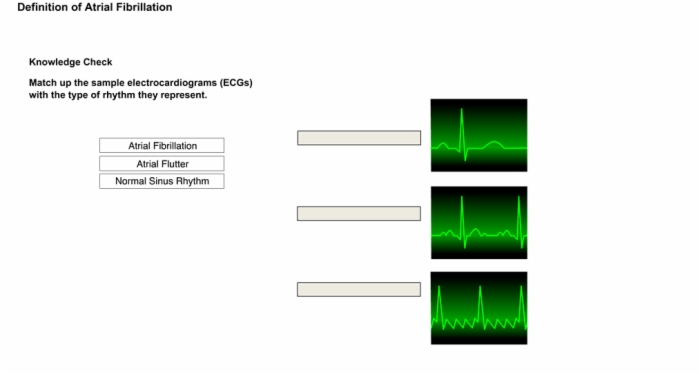

9. Causes of Atrial Fibrillation: Overview


10. Reversible Conditions and Associated Heart Disease


11. Atrial Fibrillation Without Associated Heart Disease - Lone AF


12. Knowledge Check: Atrial Fibrillation Prevalence


13. Knowledge Check: Underlying Heart Disease or Secondary Identifiable Factors


14. Knowledge Check: Risk Factor for AF
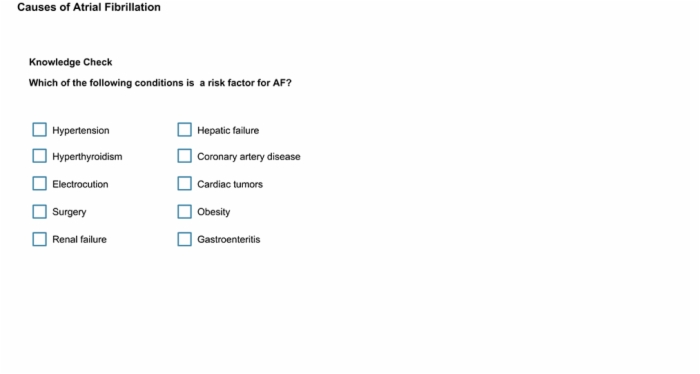

15. Atrial Fibrosis
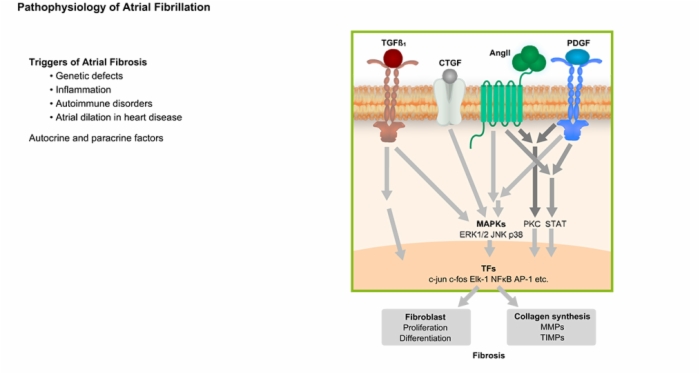

16. Triggers and Mechanisms of Atrial Fibrillation


17. Atrial Fibrillation Maintaining Mechanisms


18. Knowledge Check: Electrical Remodeling, Structural Remodeling, and AF


19. Knowledge Check: Atrial Fibrillation Mechanism


20. Knowledge Check: Atrial Fibrillation Ectopic Impulse Mechanism


21. Myocardial and Hemodynamic Consequences: Overview


22. Risk of Thromboembolism
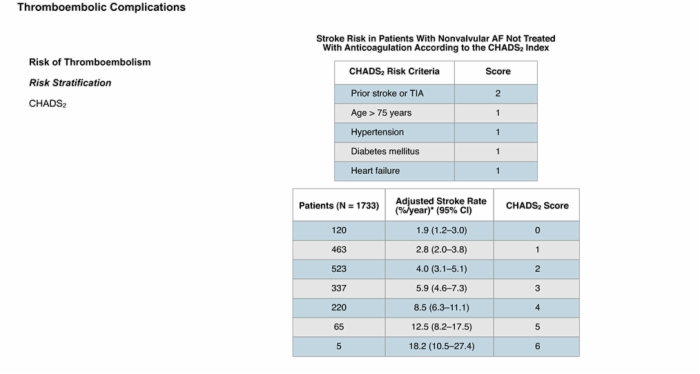

23. Risk Stratification: CHADS2 Limitations
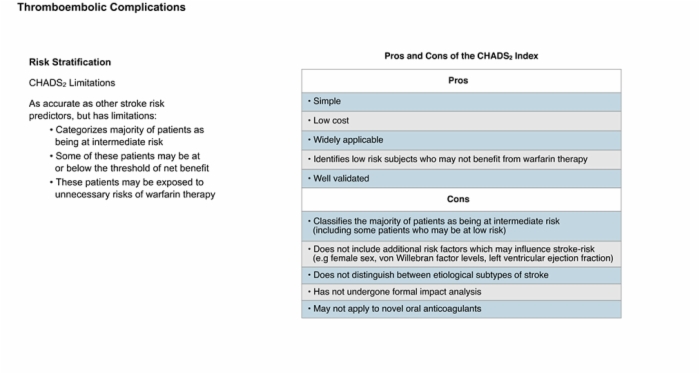

24. Risk of Thromboembolism: Risk Stratification


25. Thromboembolic Complications: Atrial Stunning During Cardioversion


26. Transient Ischemic Attacks and Stroke and Impact of Stroke in Atrial Fibrillation


27. Knowledge Check: Potential Complications of Atrial Fibrillation


28. Knowledge Check: Risk Factors for Stroke and Thromboembolism


29. Knowledge Check: Risk Stratification Scheme


30. Management Goals and Factors to Consider


31. Overview of Strategies and Rate Control


32. Rate Control: Pharmacological Therapy


33. Rate and Rhythm Control
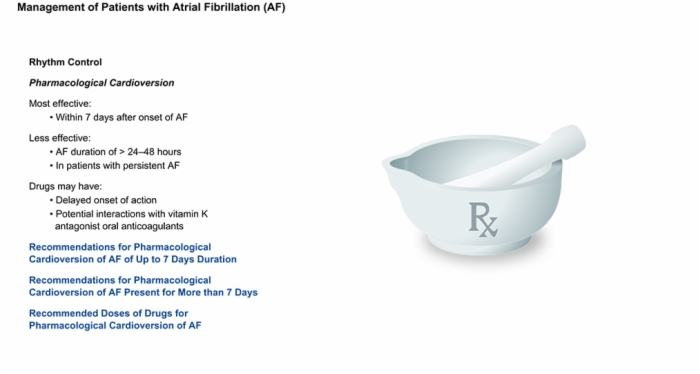

34. Rhythm Control: Nonpharmacological Methods


35. Rhythm Control and Preventing Thromboembolism


36. Preventing Thromboembolism: Anticoagulation


37. Knowledge Check: Rate Control vs. Rhythm Control


38. Knowledge Check: Efficacy for Pharmacological Cardioversion


39. Knowledge Check: AACF/AHA/AHRS Guidelines


Lesson Cardiovascular: Atrial Fibrillation teaches these concepts
Understanding Atrial Fibrillation, Introduction: Atrial Fibrillation
Lesson Cardiovascular: Atrial Fibrillation addresses these key points
Atrial fibrillation (AF) is the most common arrhythmia in clinical practice.
- During AF there is reduced flow of blood in the left atria and left atrial appendage that corresponds to loss of organized mechanical contraction.
- Decreased blood flow in the left atrium and left atrial appendage during AF is associated with thrombus formation and embolic events.
Lesson Cardiovascular: Atrial Fibrillation is built from these main references. Log into SMi Source for a complete list and details.
Fuster V, Rydén LE, Cannom DS, et al. 2006 Writing Committed Members. Wann LS, Curtis AB, Ellenbogen KA, et al 2011 Writing Group Members. 2011 ACCF/AHA/HRS Focused Updates Incorporated Into the ACC/AHA/ESC 2006 Guidelines for the Management of Patients with Atrial Fibrillation. Journal of the American College of Cardiology. 2011;57(11):e101-e198. (Pg 117e, col 1, para 2)
GA Insertion and Go AS, Hylek EM, Phillips KA, et al. Prevalence of diagnosed atrial fibrillation in adults. National implications for rhythm management and stroke prevention: the AnTicoagulation and Risk Factors in Atrial Fibrillation (ATRIA) study. JAMA. 2001;285:2370-2375.
GA Insertion and Lloyd-Jones DM, Wang TJ, Leip EP, et al. Lifetime risk for development of atrial fibrillation: the Framingham Heart Study. Circulation. 2004;110:1042-1046.
Menke J, Lüthje L, Kastrup A, Larsen J. Thromboembolism in Atrial Fibrillation. Am J Cardio. 2010;105:502-510. (Pg 502, col 1, para 1; Pg 505, col 2)
MK Detail added. Menke J, Lüthje L, Kastrup A, Larsen J. Thromboembolism in Atrial Fibrillation. Am J Cardio. 2010;105:502-510. (Pg 502, Abstract; col 1, para 1)